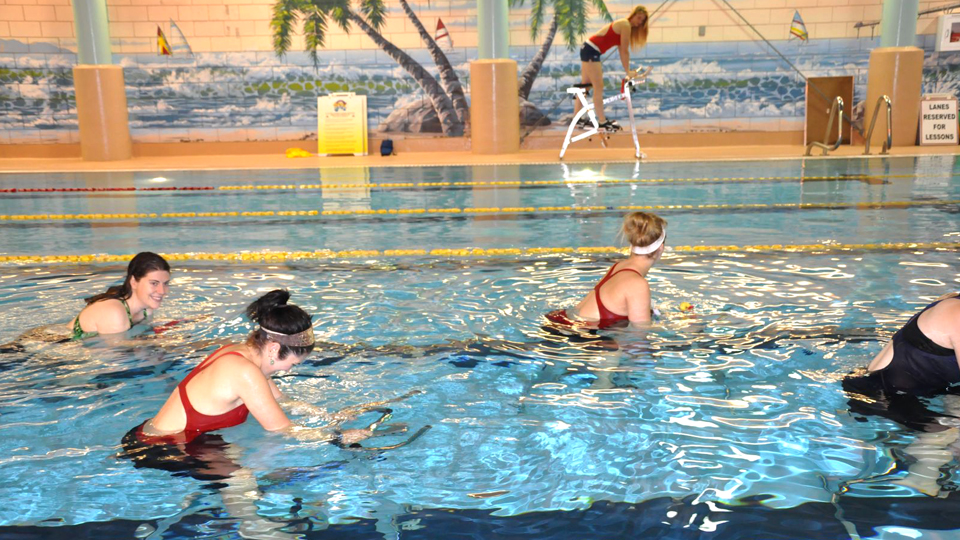You might be privy to the buzz if you spend enough time pumping iron and running laps in the RAWC, but for those who haven’t heard, the RAWC is once again offering the famed hydrorider class, which lets you burn calories in a fun and innovative way. I decided to take the plunge myself and see what all the fuss is about and was pleasantly surprised by the experience. The class is designed for participants of any skill or fitness level, both students and faculty.
The class begins with participants getting accustomed to the cycling motion of the hydrorider by starting slow and working their way up. The workout is known as the “pyramid routine”, in which the intensity of the workout gradually increases at designated intervals. For a gradual build and recovery, the workout starts with cycling at a medium to high level of intensity and increases in intensity every five seconds up to the one-minute mark; this is the climb up the pyramid. Each period of cycling alternates with an equally long rest period of riding at a slower pace. The pyramid routine ends with participants climbing down the pyramid as the cycle and rest periods decrease in intensity.
The workout isn’t finished there. Participants are taught at the beginning of class how to ride the machine while keeping their body elevated. Now they combine this skill with another pyramid routine in which participants climb at a higher intensity while lifting their bodies from the seat, with increases of intensity every 20 seconds.
During the final part of the workout, a variety of exercises are performed, including underwater arm movements, which take the pressure off your likely worn-out legs, push-ups on the hydrorider machines, and a set of stretches.
The entire class clocks in at under an hour and offers a full-body calorie-burning spin class without applying much pressure on the joints. “[This is] a real cardio workout without the stress on your joints. Do the class and let the water do the rest,” says Bronte Murcar-Evans, the instructor.
The hydrorider class offers lower resistance than a traditional spin class. In addition, there are no speed adjustments, which doesn’t make the workout easier, but does make it more comfortable. This is why hydroriders are often used in hydrotherapy to treat joint, lower back, and knee injuries.
“For those recovering from injuries, being in the water itself can help,” says Murcar-Evans. “The water’s buoyancy helps relieve stress on joints, which is key with injury recovery. I know from my own personal experience with a chronic condition in my lower back that the hydrorider class was gentle on my lower back, while still allowing me to get in my cycle workout.”
Students are encouraged to try the class out for themselves. The workout varies from week to week, shifting the focus between endurance, pace, speed, arms, and core. Classes are available at the RAWC swimming pool on Mondays from 5 to 6 p.m. and Wednesdays from 8 to 9 p.m.

